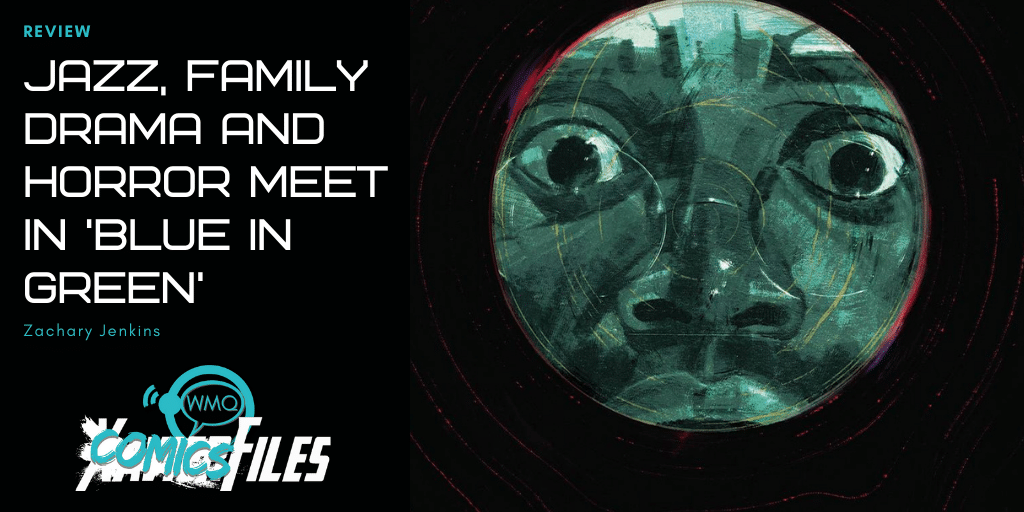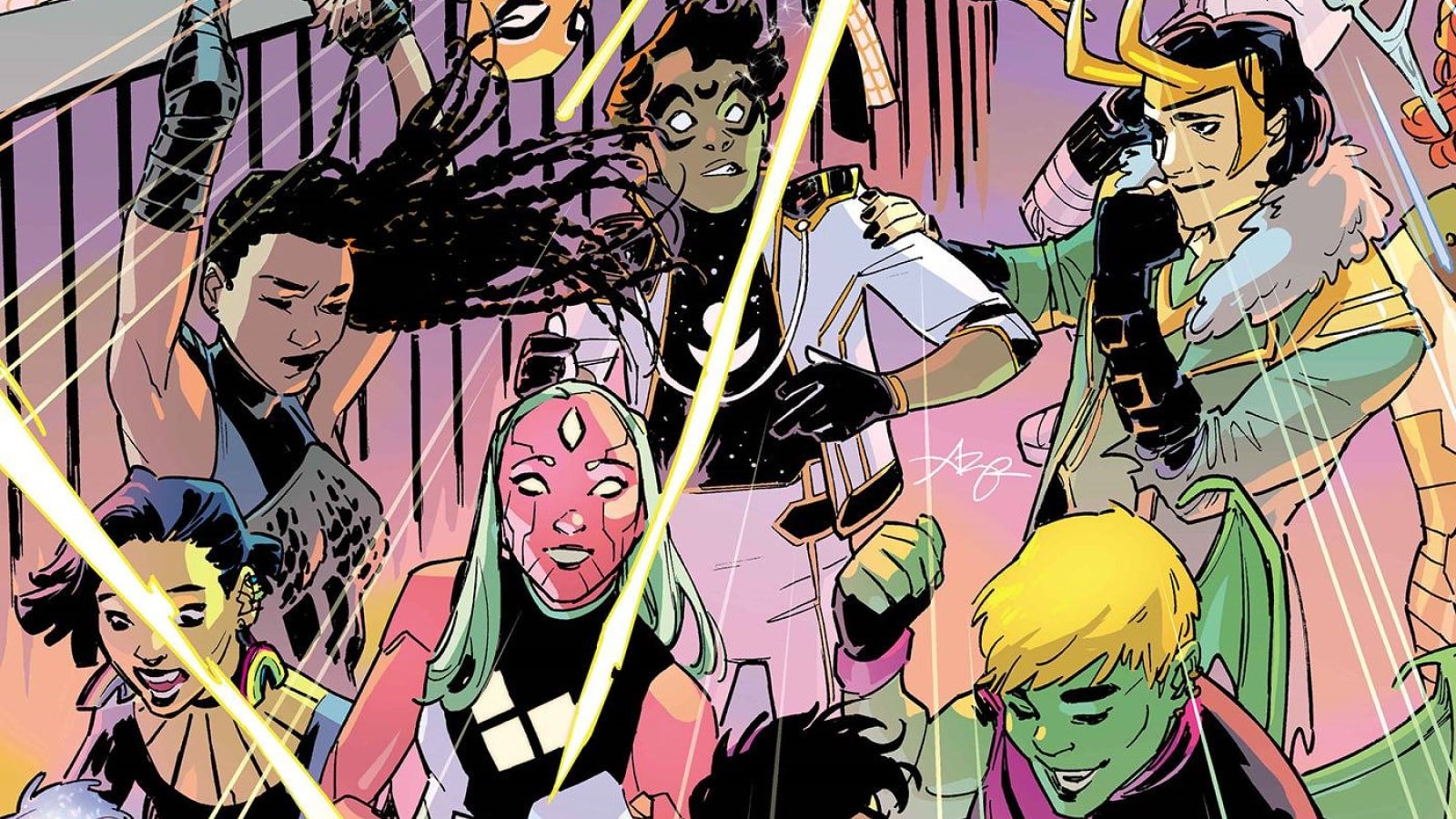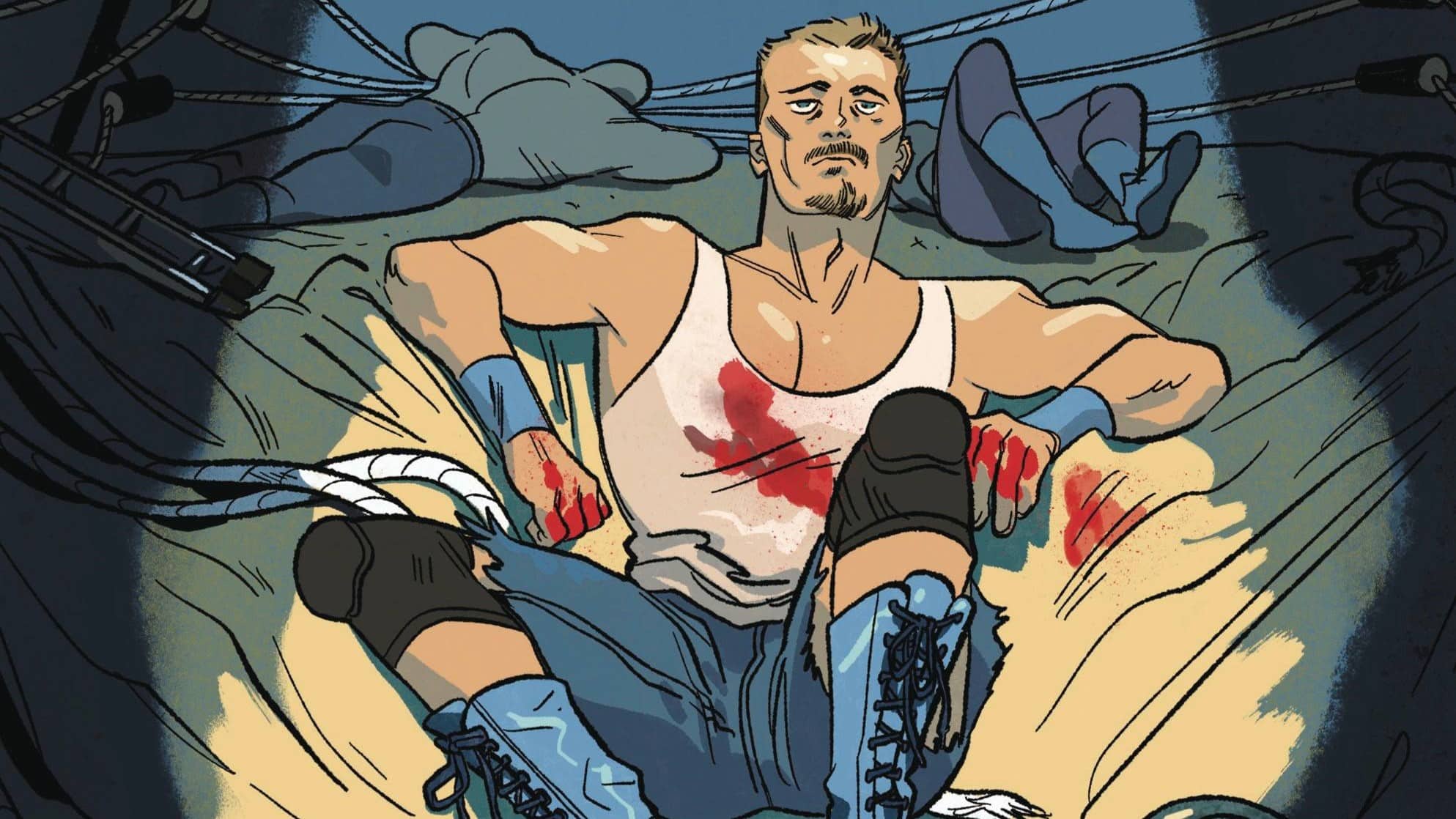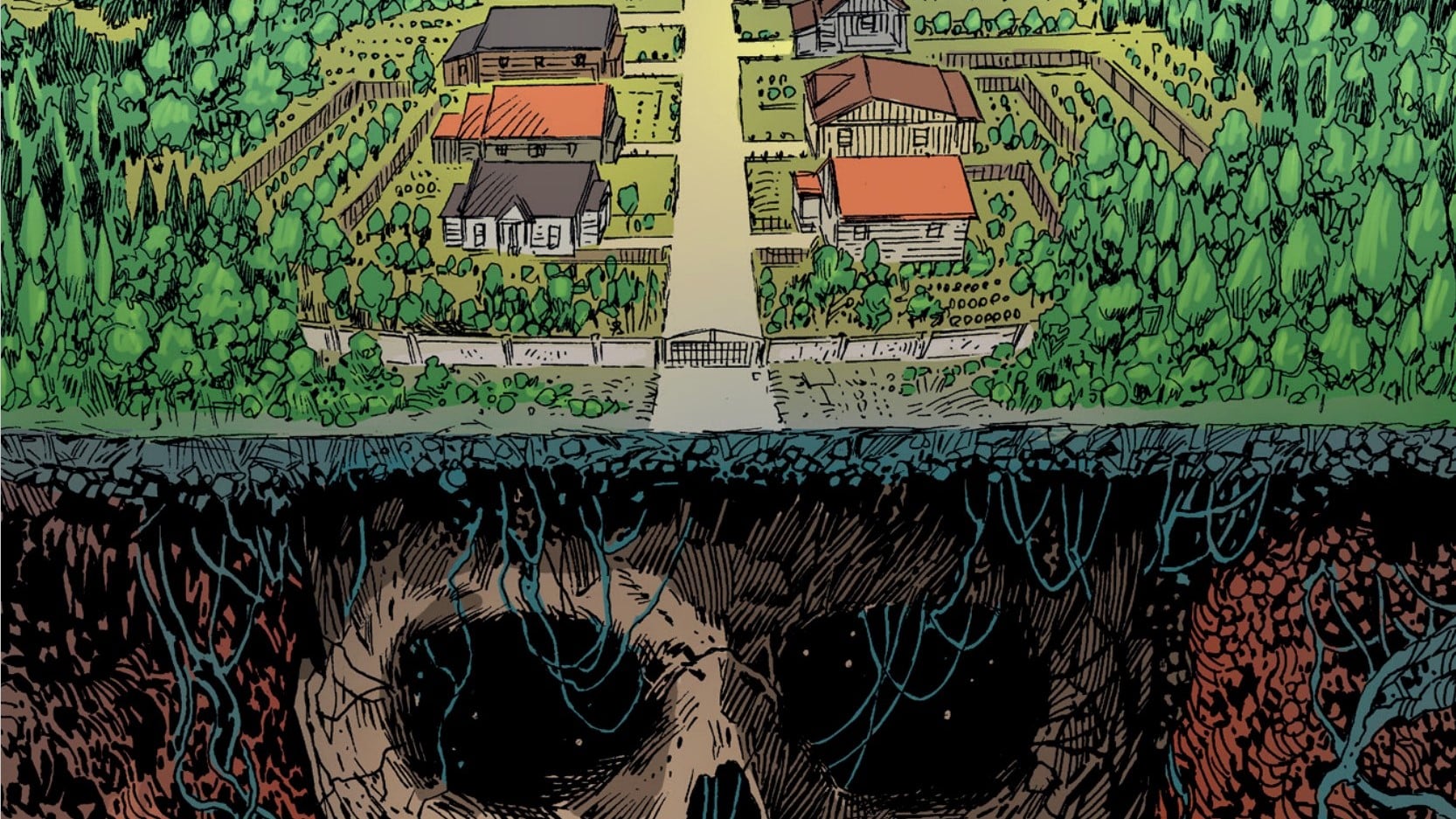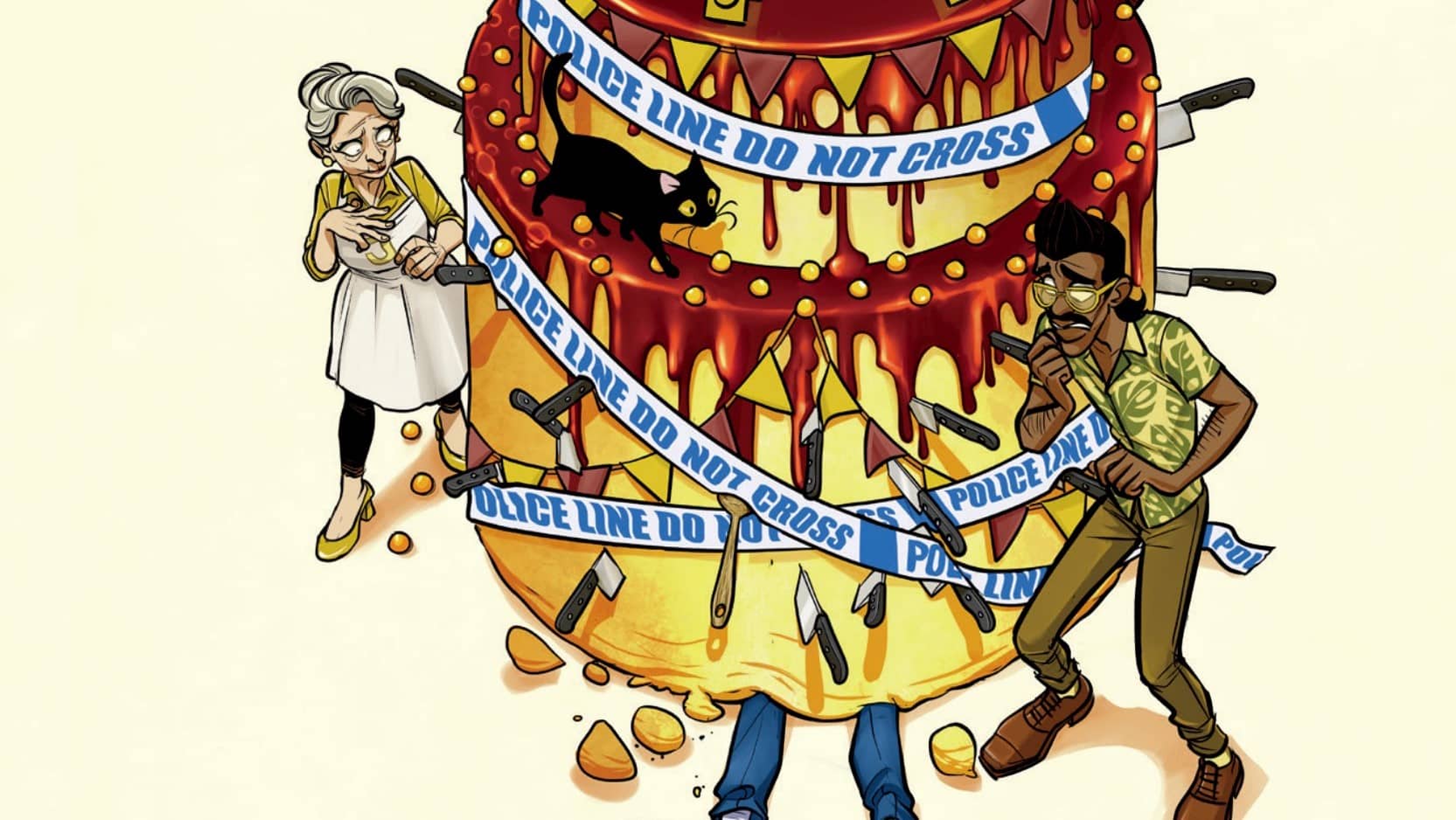
Jazz, good jazz, is a conversation in a language you don’t quite read. A collaboration between a motley band of discrete artists, pushing and pulling each other into new and unforeseen directions. Tight, syncopated beats laid under velvety woodwinds, while twinkling piano keys dance up and down the staff, sliding between thunderous rapture from the brass. It’s complex chaos where the emotions are clear to anyone with ears, but the syntax requires training and discipline to fully comprehend. It’s music that appeals to musicians because they understand the skill involved in its creation.
Blue In Green, by writer Ram V, artist Anand RK, colorist John Pearson and letterer Aditya Bidikar, embodies the spirit of jazz as the team delivers one of the most stunning comics of the year. It’s a textured, complex and in all ways smooth graphic novel that doesn’t try to dazzle with pretensions of importance or the pretext of commercial appeal. It’s a saxophone bellowing out in a humid, smoke-filled club on the edges of the French Quarter. It’s precise, draining and exploding with a haunting melody that will sit with you long after you’ve turned the last page.
Writer and weekend music teacher Erik Dieter returns home for his estranged mother’s funeral and soon finds himself enthralled in mystery. His obsession forces him to reveal ancient, fundamental truths about himself and the deep scars of generational trauma. All this in a world that Ram and Anand have painted with the broad brush of America’s most important gift to the musical world.

As spiraling as it can be, jazz has an essential underlying structure in its rhythm section. Through complex time signatures and modulating tempos, the drums and bass attack with precision to keep the performance together. So, too, does Anand’s linework form the foundation of this title. There’s a loose, impressionist nature that evokes Bill Sienkiewicz. It’s smoky, almost formless in that way jazz can be. But in a brilliant choice, Anand retains artifacts from his process that ground the drawings and give them shape. Blue lines from the bristol board break through to the surface while tangents and perspective lines leak across the page. It’s as if Anand wants the reader to understand that he has not only mastered the fundamentals but transcended them.
Ram’s plot continues that fusion as noir, family drama and eldritch horror combine into a tight tune. He guides the reader into Erik’s mindset, taking them on the journey with him, unsure where it will end. It takes a casual pace, giving ample time to absorb the emotions of each locale and unique character Ram introduces. A downside to this is that the reader ends up less invested in the actual mystery. Instead, they are driven because they want to see Erik receive emotional catharsis. They want that final note to resolve.
This isn’t a story without atonal elements. The book delivers better moments when it is grounded in reality, or the delusional, emotive soundscape that heightens the book. When it shifts to a more traditional horror mode, the title suffers. The literalism of the monster feels like overexplaining when the moody art and internal monologues were telling the tale just fine. Bidikar delivers angular balloons that fit smoothly with the sketchy art, but some of the letterforms become jarring anchors for the eye. This is especially apparent on pages with long monologues where “O” and “TT” can break the reader’s flow.

These nitpicks aside, Blue In Green is still one of the most beautiful and haunting stories to come from comics this year. The team makes pitch-perfect use of the graphic novel format to deliver a bounty of melancholy and music. It’s a song that’s going to get stuck in your head, and you are going to love it.
Zachary Jenkins runs ComicsXF and is a co-host on the podcast “Battle of the Atom.” Shocking everyone, he has a full and vibrant life outside of all this.

